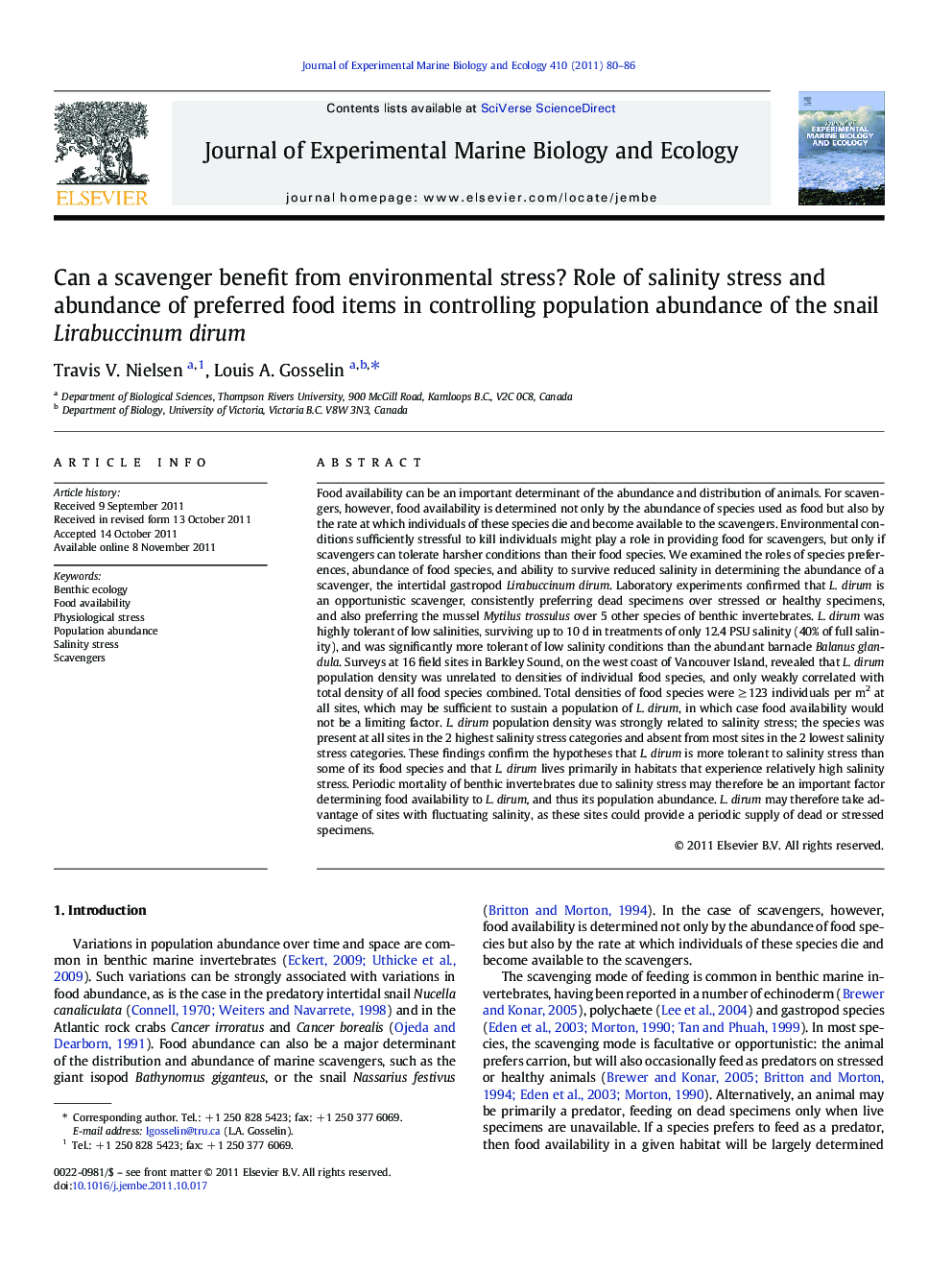| Article ID | Journal | Published Year | Pages | File Type |
|---|---|---|---|---|
| 4396078 | Journal of Experimental Marine Biology and Ecology | 2011 | 7 Pages |
Food availability can be an important determinant of the abundance and distribution of animals. For scavengers, however, food availability is determined not only by the abundance of species used as food but also by the rate at which individuals of these species die and become available to the scavengers. Environmental conditions sufficiently stressful to kill individuals might play a role in providing food for scavengers, but only if scavengers can tolerate harsher conditions than their food species. We examined the roles of species preferences, abundance of food species, and ability to survive reduced salinity in determining the abundance of a scavenger, the intertidal gastropod Lirabuccinum dirum. Laboratory experiments confirmed that L. dirum is an opportunistic scavenger, consistently preferring dead specimens over stressed or healthy specimens, and also preferring the mussel Mytilus trossulus over 5 other species of benthic invertebrates. L. dirum was highly tolerant of low salinities, surviving up to 10 d in treatments of only 12.4 PSU salinity (40% of full salinity), and was significantly more tolerant of low salinity conditions than the abundant barnacle Balanus glandula. Surveys at 16 field sites in Barkley Sound, on the west coast of Vancouver Island, revealed that L. dirum population density was unrelated to densities of individual food species, and only weakly correlated with total density of all food species combined. Total densities of food species were ≥ 123 individuals per m2 at all sites, which may be sufficient to sustain a population of L. dirum, in which case food availability would not be a limiting factor. L. dirum population density was strongly related to salinity stress; the species was present at all sites in the 2 highest salinity stress categories and absent from most sites in the 2 lowest salinity stress categories. These findings confirm the hypotheses that L. dirum is more tolerant to salinity stress than some of its food species and that L. dirum lives primarily in habitats that experience relatively high salinity stress. Periodic mortality of benthic invertebrates due to salinity stress may therefore be an important factor determining food availability to L. dirum, and thus its population abundance. L. dirum may therefore take advantage of sites with fluctuating salinity, as these sites could provide a periodic supply of dead or stressed specimens.
► L. dirum consistently prefers dead prey over stressed or healthy prey. ► L. dirum can survive in 12.4 PSU salinity water. ► L. dirum is more tolerant of low salinity conditions than its prey. ► L. dirum population density is greatest at sites with high salinity stress.
